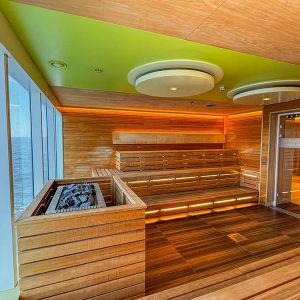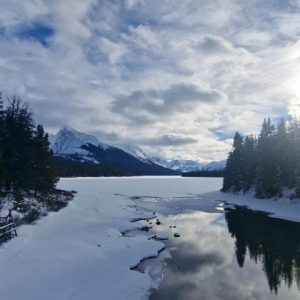Have you ever thought about learning to fly a glider on your holiday? You could well find that gliding is exciting, exhilarating and very challenging. It can lead to a whole new life experience for ever and there are many opportunities for it in Britain. I know a bit about it. They sent me solo in a glider in the sixties when I should have been doing my homework and I spent a summer, later on, flying a glider tug aircraft. Gliding is for every one of all ages. Many people have taken to it after they have retired and it has become an abiding passion for them.
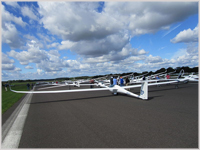 Gliding is all about using the renewable forces in the atmosphere to stay aloft. A glider uses the sun and air currents as its driving force. Glider pilots know how to find vertical lifting forces in the sky. They know what to look for and know where to find them. It costs maybe just a gallon of fuel to launch a glider into the sky. After that it is free. It is just the pilot and the glider competing against the constantly changing forces in the vast air currents around them. A glider can stay up all day and travel hundreds of miles. Gliding is for the purist pilot and a very real way of using powerful, renewable and natural forces to enjoy all that the sky has to offer.
Gliding is all about using the renewable forces in the atmosphere to stay aloft. A glider uses the sun and air currents as its driving force. Glider pilots know how to find vertical lifting forces in the sky. They know what to look for and know where to find them. It costs maybe just a gallon of fuel to launch a glider into the sky. After that it is free. It is just the pilot and the glider competing against the constantly changing forces in the vast air currents around them. A glider can stay up all day and travel hundreds of miles. Gliding is for the purist pilot and a very real way of using powerful, renewable and natural forces to enjoy all that the sky has to offer.
There are many gliding clubs in Britain providing training courses for people of all ages whilst they are on their holidays. The training is of a very high quality, very safe and, surprisingly, very affordable. All of the pilot training is provided under the strict watchful eye of the British Gliding Association. This is the rule making body of the field and operates alongside the Civil Aviation Authority. The BGA pilot certificate system and training standards are recognised worldwide.
Gliding clubs that provide holiday training courses publish their details on the BGA website. You can attend for the training from a Monday through to Friday or longer if you wish. Participants will receive between six to eight short instructional flights a day. It will depend on the weather but the average number of lessons before going ‘solo’ is somewhere between 20 and 40. You could fly on your own perhaps in the first week if you find your confidence. Your instructor will know when you are ready and everybody is different.
There are no age limits when it comes to flying a glider. Medically, you have to get a SRG1204 certificate signed up by your own doctor. This will certify your average fitness and freedom from epilepsy. You will need this before you can fly on your own. Once you get to be 65, you have to get your SRG1204 signed annually. Watch your weight. Some clubs impose a limit of around 105 kilo’s. A glider cockpit is a very confined place to sit but the flying control positions can be adjusted to suit everyone.
Specialist training is available for disabled people too. There are many pilots in Britain and other countries flying, both gliders and powered aircraft, with quite severe disabilities. For many of them the opportunity to fly an aeroplane has been inspirational. You only need your hands and feet to operate the flying controls. Look on the BGA website for details.
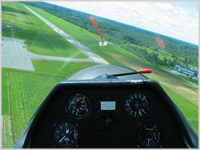 Learning to fly a glider, like any aircraft, is fundamentally about using the flying controls to maintain a safe speed thought the air at all times. Your instructor will hone your awareness of avoiding stalling and ensure that you know all about airspeed considerations. On most of your training flights you will be launched into the air by a ground based winch. This will be a little alarming until you get used to it but will haul you up to about 1000 feet above the ground. The gentle drift back to earth will take a few minutes and you will take the controls. You will find out about controlling the aircraft in terms of direction and descent rate. You will be taught to dream about maintaining a safe speed through the air. For some, these early flying lessons provide the most extraordinary fun and excitement. If you find that you like flying, being sent off on your first solo flight will be one of those great life experiences.
Learning to fly a glider, like any aircraft, is fundamentally about using the flying controls to maintain a safe speed thought the air at all times. Your instructor will hone your awareness of avoiding stalling and ensure that you know all about airspeed considerations. On most of your training flights you will be launched into the air by a ground based winch. This will be a little alarming until you get used to it but will haul you up to about 1000 feet above the ground. The gentle drift back to earth will take a few minutes and you will take the controls. You will find out about controlling the aircraft in terms of direction and descent rate. You will be taught to dream about maintaining a safe speed through the air. For some, these early flying lessons provide the most extraordinary fun and excitement. If you find that you like flying, being sent off on your first solo flight will be one of those great life experiences.
Holiday gliding courses can be undertaken at many clubs in Britain. The safety and training standards will be consistently high everywhere but lack of space allows me to mention only three of the more prominent establishments. The London Gliding Club based on the beautiful Dunstable Downs has a very long and established training reputation. The Gliding Centre at Husbands Bosworth in the Midlands is presided over by instructors with long experience of the flying world behind them. The Cambridge Gliding Club at Gransden aerodrome has been around since the very earliest days of aviation. It is attended by a number of pilots of all ages that are associated with the nearby University. Prices vary but a five day course will cost around 600 pounds. The fee includes temporary membership of the club to cover aerodrome operating costs. Basic accommodation for the week can be had at very modest additional cost or you can just take your caravan and park at the airfield. Have a look on the website.
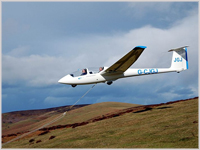 Most clubs use the ASK21 for training. This is a glider with two seats in tandem. It is very sleek, constructed of light and strong carbon material and looks like a fighter jet. The student sits in the front seat. A modern glider is aerodynamically pristine and the engineering is as perfect and robust as it can be. Your first solo flight will be right up front in this streamlined flying machine. You will have learnt to fly an aircraft. They are all actually the same in reality, whether it is your glider or a jumbo jet.
Most clubs use the ASK21 for training. This is a glider with two seats in tandem. It is very sleek, constructed of light and strong carbon material and looks like a fighter jet. The student sits in the front seat. A modern glider is aerodynamically pristine and the engineering is as perfect and robust as it can be. Your first solo flight will be right up front in this streamlined flying machine. You will have learnt to fly an aircraft. They are all actually the same in reality, whether it is your glider or a jumbo jet.
The sport of glider flying is intensively practiced in Britain and is carefully regulated by the British Gliding Association. The pilots who become instructors have all completed an intense period of training and have to re-demonstrate their competence at regular intervals. The climate in Britain, surprisingly, is very suited to support the activity. The closeness of the land to the sea sets up a temperature relationship in the sky creating powerful vertical currents. Many international gliding competitions take place in this country with participants bringing their aircraft from all over the world.
Students participating in their training are encouraged to help on the ground as much as they are able when they are not flying. The sport of gliding depends very much on the help of other people and will help you keep your fitness. Everyone can muck in as far as they can if they wish. There is the ground handling of gliders, record keeping of flights, use of the intercom radios and all the other activities to keep flying going for the day. You learn to love the fresh air and you will make many good friends. To soar through the sky with only natural forces for support is the most natural form of flying. Maybe it will be the only thing left when the oil runs out.
More about Bob
I have recently retired from a long career as a flying instructor and regional airline captain. During my flying years, I spent much time based in European cities and locations. I have learnt to love the European continent and all the different cultures there. It continues to excite me. I now really like to write so much about my experiences both as a mainland Europe observer and as a flyer. I have visited much of the continent, both east and west and have had many adventures. I am not quite over the hill yet and pass on for the traveller details of what I have seen and done with great glee. I love France and many of the EU member states and visit them as often as I can afford.

